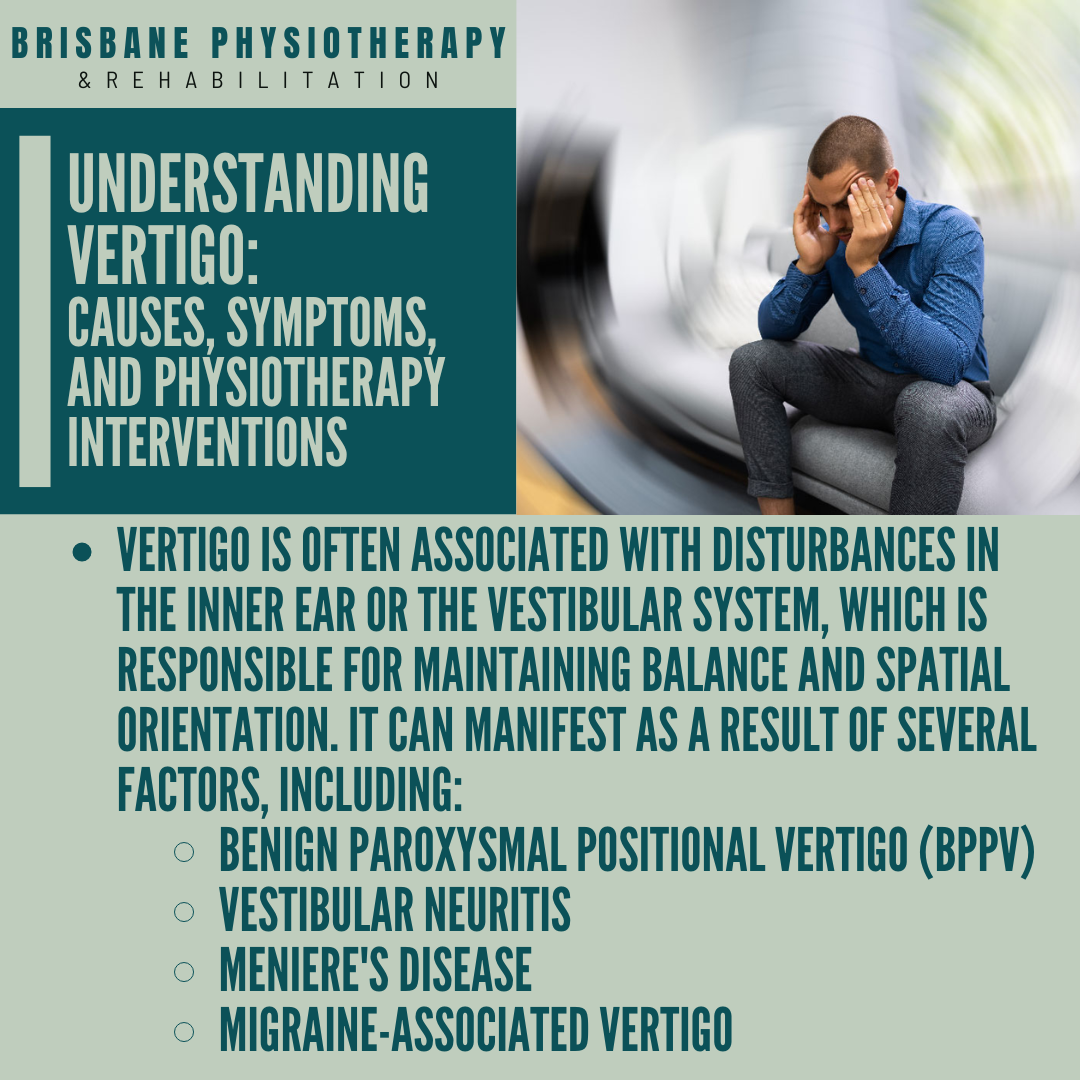Understanding Vertigo: Causes, Symptoms, and Physiotherapy Interventions
Introduction:
Vertigo is a condition characterised by a sensation of spinning, dizziness, or imbalance. It can significantly impact an individual's quality of life, leading to feelings of disorientation and discomfort. While vertigo can arise from various underlying causes, physiotherapy interventions play a crucial role in managing and alleviating its symptoms.
Understanding Vertigo:
Vertigo is often associated with disturbances in the inner ear or the vestibular system, which is responsible for maintaining balance and spatial orientation. It can manifest as a result of several factors, including:
Benign Paroxysmal Positional Vertigo (BPPV): BPPV is one of the most common causes of vertigo and occurs due to the displacement of calcium carbonate crystals within the inner ear canals.
Vestibular Neuritis: This condition involves inflammation of the vestibular nerve, typically caused by viral infections.
Meniere's Disease: Meniere's disease is characterised by fluid buildup in the inner ear, leading to episodes of vertigo, hearing loss, and tinnitus.
Migraine-Associated Vertigo: Some individuals experience vertigo as a symptom of migraines, known as vestibular migraines.
Symptoms of Vertigo:
Vertigo can present with various symptoms, including:
Spinning sensation
Nausea and vomiting
Loss of balance
Sweating
Nystagmus (involuntary eye movements)
Difficulty focusing or concentrating
Anxiety or panic attacks
Physiotherapy Interventions for Vertigo:
Physiotherapy plays a crucial role in the management of vertigo, aiming to improve balance, reduce symptoms, and enhance overall function. Some common physiotherapy interventions for vertigo include:
Canalith Repositioning Manoeuvres: Canalith repositioning manoeuvres, such as the Epley manoeuvre, are effective in treating BPPV by relocating displaced calcium crystals within the inner ear canals, alleviating symptoms of vertigo.
Vestibular Rehabilitation Therapy (VRT): VRT is a specialised exercise-based program designed to promote vestibular compensation and adaptation. It involves a series of exercises and movements aimed at enhancing vestibular function, improving gaze stability, and reducing dizziness and imbalance.
Balance Training: Balance training exercises focus on improving proprioception, coordination, and postural control. These exercises help individuals regain stability and confidence in performing daily activities without experiencing vertigo-related symptoms.
Gaze Stabilisation Exercises: Gaze stabilisation exercises aim to enhance visual fixation and reduce dizziness during head movements. These exercises involve focusing on a stationary object while performing controlled head movements in different directions.
Education and Lifestyle Modifications: Physiotherapists also provide education regarding vertigo triggers, fall prevention strategies, and lifestyle modifications to minimise symptoms and optimise recovery.
Conclusion:
Vertigo can significantly impact an individual's daily life, but with appropriate physiotherapy interventions, its symptoms can be effectively managed and alleviated. Through a combination of canalith repositioning manoeuvres, vestibular rehabilitation therapy, balance training, and education, individuals experiencing vertigo can regain control over their symptoms and improve their overall quality of life. If you're experiencing recurrent episodes of vertigo, consult with a physiotherapist or healthcare professional for a comprehensive assessment and personalised treatment plan tailored to your needs.

